Apple's iPhone 4: Thoroughly Reviewed
by Brian Klug & Anand Lal Shimpi on June 30, 2010 4:06 AM EST- Posted in
- Smartphones
- Apple
- iPhone 4
- Gadgets
- Mobile
Camera Usability
It still takes almost two seconds to activate the camera on the 4, which is enough time to miss whatever it is you’re trying to grab a photo of. Thanks to the iOS 4 update however, the shutter is almost instantaneous. The difference appears to be that the photo is committed to memory but not fully written to NAND, whereas before the photo would be written to the Flash before you could take another picture. Power loss in the middle of snapping photos seems pretty rare on a smartphone so the tradeoff, if I’m correct, makes sense.
Apple opted for a lower noise rather than higher resolution sensor in the iPhone 4 and it did pay off. The main camera shoots photos at 2592 x 1936 compared to the EVO 4G’s 3264 x 1952, but the resulting images are far less noisy - particularly in low light situations:
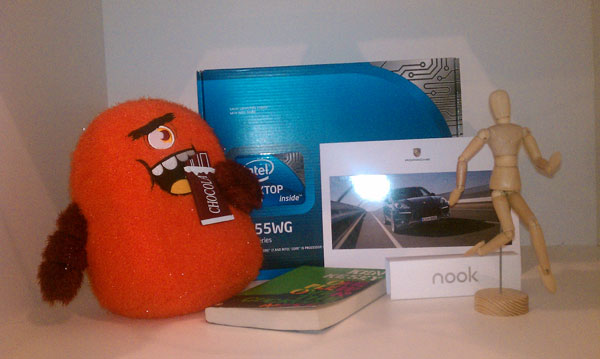
HTC EVO 4G - Low Light
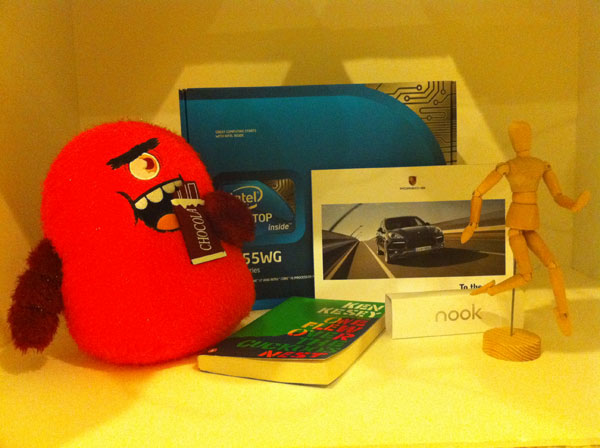
Apple iPhone 4 - Low Light
The 4’s main camera, like the HTC Incredible and EVO 4G, is a decent replacement for a point and shoot if you’re primarily outdoors. You’re still going to get better image quality out of a good point and shoot, but the tradeoff is convenience. The limitations are significant.
Because you rely on the iPhone 4’s software controlled aperture and shutter speed you don’t have the ability to properly expose the image. You have to rely on Apple’s algorithms, which tend to either overexpose outdoors or miscalculate white balance with non-halogen light sources.
This is an example of a photo taken outdoors that’s more washed out than it needs to be:

And many of you picked up on the white balance issue I snuck into our EVO 4G review yesterday:
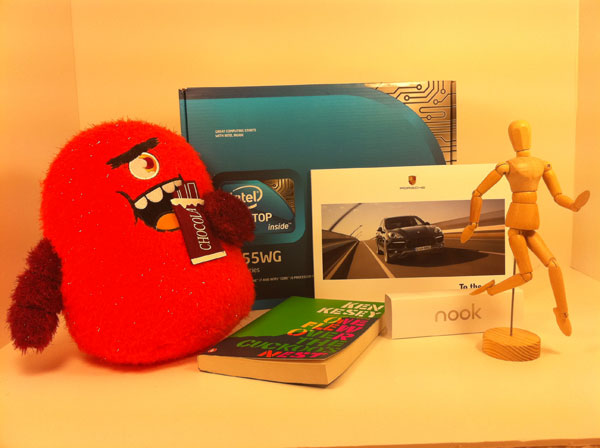
Regardless of where I tapped to focus, I could not get the iPhone 4 to set a proper white balance in our photo box.
While I was watching the screen, the iPhone 4 would alternate between yellow and white for the background color. It seemed to be trying to calculate the white point but was just being thrown off by the type of light. If I timed the shot right I could snag the photo while the iPhone was switching between white balance points:

I also had this problem in my office which uses LED can lights.

This is far more yellow than it should be
While Brian didn't have the same problems I did, Brandon Hill (DailyTech Editor in Chief) did. It seems to be very dependent on the type of lighting you have and even then it seems to vary based on the type of CFLs. And unlike the EVO 4G, there’s no way to manually set a white balance on the 4.
For overall image quality though I have to hand it to Apple, the iPhone 4 does do a better job than the EVO 4G or other phones I’ve used. Take a look at this shot inside my house:
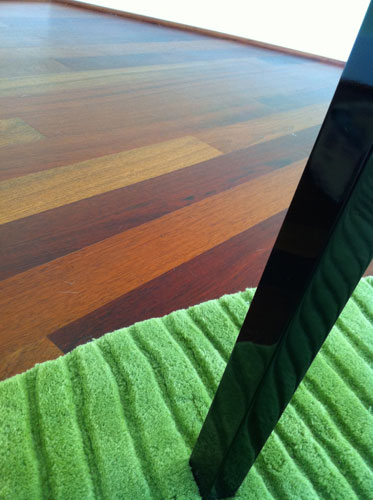
The colors in the iPhone 4 shot are on point. The green is correct, the wooden floor is right and the black is, well, black. The EVO 4G didn’t do so well on this test by comparison:
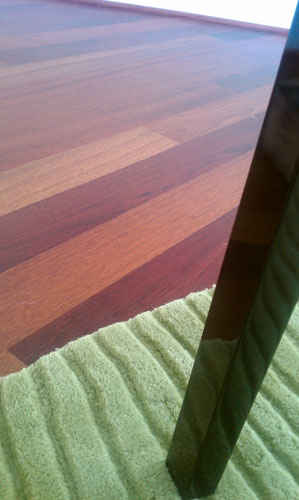
The 4’s camera isn’t perfect, but it does appear to handle colors better than the EVO (with the exception of my white balance issue) and delivers lower noise photos.
Compared to other phones the 4 does similarly well, besting the 5 megapixel camera in the Motorola Droid easily in terms of color reproduction and sharpness. Though the HTC Incredible previously was a top performer alongside the N900, the iPhone 4 makes the Incredible look a bit oversharpened and artificial. Compared to the 3GS, the iPhone 4's improvement is obviously dramatic, as shown in the gallery below.
Video is recorded at 1280x720, in H.264 with AAC mono audio. We measured a bitrate of 1.35 MBps, outclassing all the other smartphones we've tested.
iPhone 4
HTC Droid Incredible
Motorola Droid
Nokia N900
What's interesting is that the iPhone 4 appears to crop the sensor down for video recording, taking the center most 1280x720 pixels instead of scaling down the entire image size. The result is that the focal length for video recording is notably longer than when taking photos.
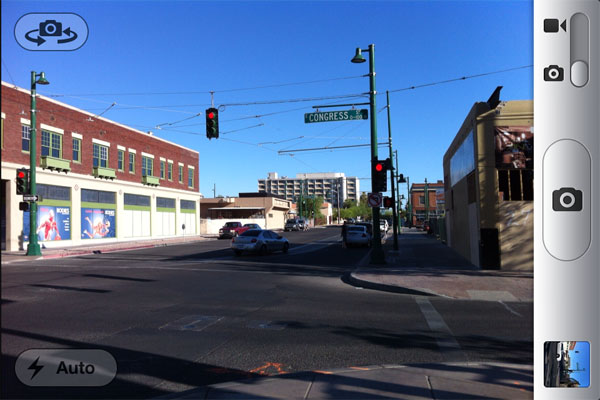
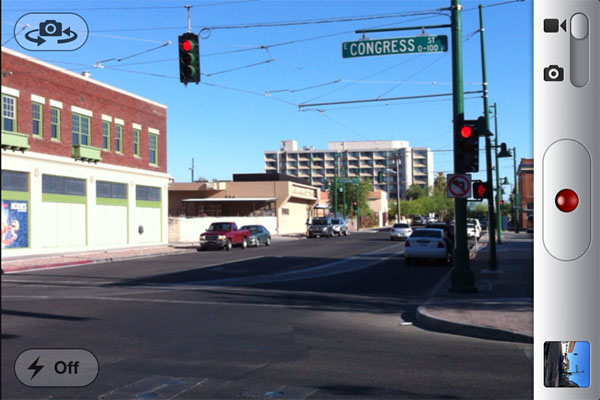
You can see the difference is quite notable standing in the same place. Perhaps the A4 SoC lacks the compute power to apply a scale and encode at the same time, necessitating this crop. Whatever the case, video shot with the iPhone 4 still looks very good at the promised and delivered 30 FPS. Move the camera around enough, and there's still screen door effect from the rolling shutter like any CMOS sensor is going to give you - it's a fundamental problem no phones are going to get around soon. Its also right there in the specifications page for the camera SoC; rolling shutter.
Similarly, iPhone 4 does give you 5x digital zoom, though we still maintain you're better off taking photos at native resolution and messing with them later with better interpolation algorithms.
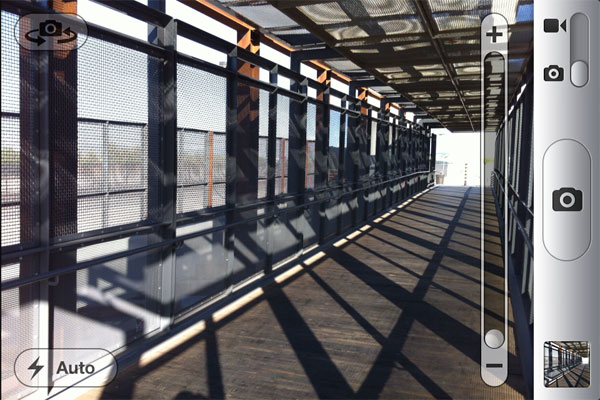
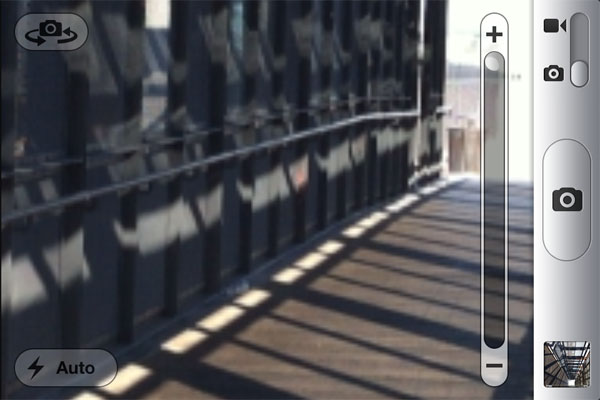






















270 Comments
View All Comments
The0ne - Wednesday, June 30, 2010 - link
Actually, Anand likes the performance of the iPhone and i don't blame him. It is smooth, well implemented and thus makes using it more enjoyable, quantifiable or not. Features be damn, what counts is how a user perceives the device he/she is using. And once attached or rather use to them it's hard to like something that isn't the same or better.For the most part, android OS and WebOS are fine for the vast majority of users. The slight sluggish performance is really not hindering anyone from doing anything practical. It is really just a matter of perception.
As for features and design, I can honestly say unless you been in the design phase yourself many decisions are made prior to production. Missing features such as Flash memory support is a choice left out purposely. Don't kid yourself they are doing it because they either can't or because of lack of money/resources.
mesiah - Thursday, July 1, 2010 - link
I don't agree with the flash memory support. Flash memory is so cheap to implement that it comes on the cheapest of cheap products. And before anyone uses the excuse of "a flash port would clutter up the phone and make it look ugly" Look at the huge ugly connector port used to sync / dock an iphone. Compare that to micro usb. You don't think they could shrink that thing to a quarter of its current size, or less, and add in a flash memory port? Hell, A smart engineer could make a docking port that doubles as a flash memory port (makes me wonder why we haven't seen this yet.) The reason you don't get upgradeable flash memory is the same reason you don't get removeable batteries. There isn't money in batteries and memory, the money is in forcing people with outdated hardware to upgrade.The0ne - Thursday, July 1, 2010 - link
Err, I think u might has misread what I was trying to say. As you've stated flash memory support is very easy and cheap to design in. For Apple not to have it means they have purposely decided against it. For example, creative labs has flash support on some of their PMP devices but it is extremely poor in design that it's unusable. That's the other caveat to just putting features in and not properly supporting it.Anand Lal Shimpi - Wednesday, June 30, 2010 - link
By feature parity I was referring to what's new that made it into iPhone 4: higher res screen, 45nm SoC, much improved battery life, smaller form factor. I'd expect that within the next 6 - 12 months we will see Android phones with similar specs.Software feature wise, Android is at parity in most cases and far ahead in others.
Take care,
Anand
darwinosx - Wednesday, June 30, 2010 - link
They you don't know much about either Android, the iPhone 4, or both.Mumrik - Friday, July 2, 2010 - link
Are you aware that your username undermines every single pro Apple comment you make?Also, I think most of us will take Anand's word for it over an anonymous commenter's.
mmike70 - Sunday, July 4, 2010 - link
Why does it undermine?John Sawyer - Thursday, July 1, 2010 - link
The somewhat larger number of pixels in the Retina display that Apple is using in the iPhone 4, plus its smaller size than the Evo and Droid X displays, do combine to make for a massive difference, as the pictures in the article show. I've compared the two, and the iPhone 4 display really is startlingly good. Many things don't look hugely different between the two, such as some videos, larger graphics and text, etc., but small text (which I look at a lot because that's what a lot of websites serve up) certainly does.semo - Wednesday, June 30, 2010 - link
I'm sorry Anand but I just couldn't bring my self to read your review after yet again detecting your bias towards this product. You come from an engineering background and it shows in your methods of analysis which appeals to me.Do you wait 6 hours in line for a new SSD? I detect hints of emotion in this article's introduction. I could be wrong but I always try to avoid technical reading when I suspect there is bias. It is plain to see on other technical sites where the companies' mission statement is part of the introduction but much more subtle here.
I look forward to your next SSD and chip architecture articles.
bplewis24 - Wednesday, June 30, 2010 - link
Anand is about the most objective Apple iPhone fanboy there is. There is no denying this, and it's both a compliment and a criticism. Until he can stop making subjective generalizations like this:"There is this more open, more configurable, more capable feel you get with Android that you don't with the iPhone. That can be both a positive and a negative. Android phones feel more like computers while iPhones have more of that appliance feel. It still boils down to personal preference, the 4 won't change that."
Really, Anand? Being more open and configurable can be a bad thing? We really need to stop perpetuating this myth that Androids can only be liked by "PC" geeks and people who like to dig deep into the OS. The reality is that Android devices don't force you to customize if you don't want to.
I'm also fairly certain that the "scrolling" issue which isn't present on my Moto Droid has something to do with the live wallpapers eating up CPU processing power. Nevertheless, I don't experience it on my phone and to blanketly imply that the OS UI is clunky (which most iPhone fanboys cling to in every comparison) is completely disingenuous.
Until Anand can rid himself of some of this bias, he will still be known as the best and most objective iPHone reviewer on the interwebs, but the title in and of itself won't be saying very much.
Brandon